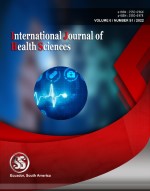Right to have an aesthetically pleasing environment
Keywords:
Environment, Human Health and happiness, Article 21 and Judicial Opinion, Enactments and International ConventionsAbstract
Beautiful ambiances and environment give us extreme happiness, make us more innovative and constructive, and we all know this fact. Just ask these two questions to yourself: 1) why do I (sometimes) feel down and depressed places?, 2) why do I feel amazed and relaxed in certain places?. After answering these questions, I think you have an idea that how our ambience and environment affect our emotions and thinking process and how much important it is for us to protect the aesthetics of our surroundings. In our country despite of bundle of laws and ordinance we find the lack of aesthetic beauty in our surroundings, this is because people don’t understand the importance of clean and beautiful environment and atmospheres in our personal life, we have right to live a quality life which means a life free from all kinds of pollutions whether it is air pollution, water pollution, land pollution or visual pollution.
Downloads
References
Johnson, Lady Bird, October 9, 1967, Speech at Yale University, White House Diary.
Yilmaz, Demet; Sagsoz, Ayse, 28 April 2011, “In the Context of Visual Pollution: Effects to Trabzon City Center Silhouette", Asian Social Science.
Rogers, K. (2019, June 25). biophilia hypothesis. Encyclopedia Britannica.
https://www.britannica.com/science/biophilia-hypothesis
Winer, Rose 2018, August 7, why beautiful spaces make us healthier, Director, Advocacy & Policy, International WELL Building Institute
AIR 1963 SC 1295 (2007) 2 SCC 413
Palkhiwals, Nani – “The Ailing Planet”, originally said by Mr. Lester Brown, “The Global Economic Prospect”.
Published
How to Cite
Issue
Section
Copyright (c) 2022 International journal of health sciences

This work is licensed under a Creative Commons Attribution-NonCommercial-NoDerivatives 4.0 International License.
Articles published in the International Journal of Health Sciences (IJHS) are available under Creative Commons Attribution Non-Commercial No Derivatives Licence (CC BY-NC-ND 4.0). Authors retain copyright in their work and grant IJHS right of first publication under CC BY-NC-ND 4.0. Users have the right to read, download, copy, distribute, print, search, or link to the full texts of articles in this journal, and to use them for any other lawful purpose.
Articles published in IJHS can be copied, communicated and shared in their published form for non-commercial purposes provided full attribution is given to the author and the journal. Authors are able to enter into separate, additional contractual arrangements for the non-exclusive distribution of the journal's published version of the work (e.g., post it to an institutional repository or publish it in a book), with an acknowledgment of its initial publication in this journal.
This copyright notice applies to articles published in IJHS volumes 4 onwards. Please read about the copyright notices for previous volumes under Journal History.
















